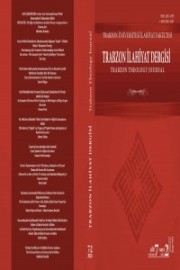Tasavvuf Literatüründe Kale Sembolü
Castle Symbol in Sūfīsm Literature
Author(s): Osman Nuri KaradayıSubject(s): Poetry, Islam studies, Turkish Literature
Published by: Karadeniz Teknik Üniversites - İlahiyat Fakültesi
Keywords: Sūfīsm; Sūfī; Symbol; Textual Archeology; Castle; Human; Self; Heart; Soul;
Summary/Abstract: In Sūfī literature, it is seen that the Sūfīs expressed some spiritual experiences they lived, the transcendental truths they perceived or the wisdoms they had difficulty in expressing through symbols. In this respect, the symbols are expressions of the meanings which defy description for Sūfīs. The castle that is one of the symbols used by the Sūfīs had maken wide connotations in the minds of the Sūfīs with its formal features such as its small gate, insurmountable walls, rugged towers, loyal guards, and interwoven parts and also with its functions such as being a place of protection from the enemy, providing security and safety and being the scene of big battles. Moreover, some narrations in verses and hadiths have affected the meaning and usage areas of the castle symbol. In various texts, the levels of the desire and soul and the nature of human that composed by desire, heart and soul have expressed by the castle symbol. Thus the castle has became a common symbol of human and his spiritual advancement in both prosaic and poetical works. In this study, based on the principle that common symbols bear the same or at least the same meanings, the world of meaning built by the Sūfīs behind the castle symbol will be examined from a holistic perspective by using the content similarities and associations between the texts. Because one way to understand the symbols is to reach this world of meaning.
Journal: Trabzon İlahiyat Dergisi
- Issue Year: 7/2020
- Issue No: 2
- Page Range: 183-226
- Page Count: 44
- Language: Turkish

